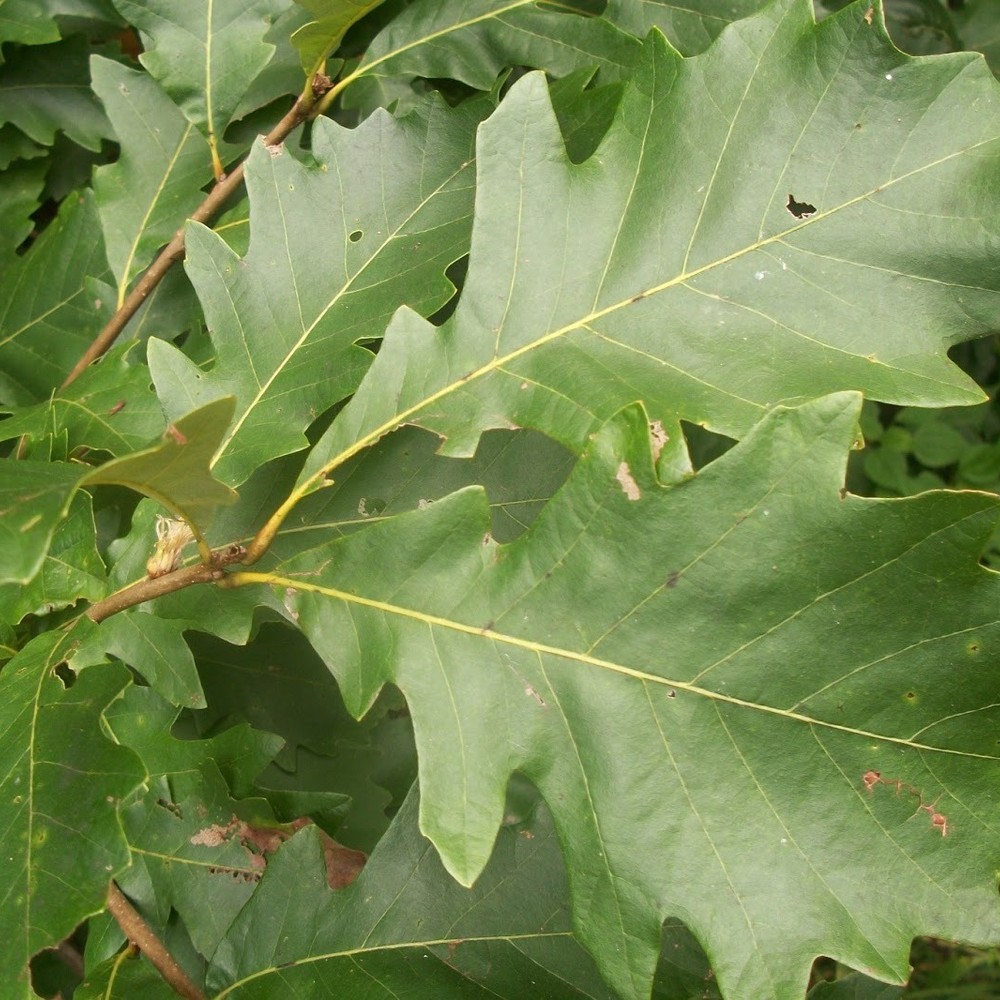Black oak
(Quercus bicolor)

Description
Quercus velutina, the black oak, is a species of oak in the red oak group (Quercus sect. Lobatae), native and widespread in eastern and central North America. It is sometimes called the eastern black oak. Quercus velutina was previously known as yellow oak due to the yellow pigment in its inner bark. It is a close relative of the California black oak (Quercus kelloggii) found in western North America. In the northern part of its range, black oak is a relatively small tree, reaching a height of 20–25 metres (66–82 feet) and a diameter of 90 centimetres (35 inches), but it grows larger in the south and center of its range, where heights of up to 42 m (138 ft) are known. The leaves of the black oak are alternately arranged on the twig and are 10–20 cm (4–8 in) long with 5–7 bristle-tipped lobes separated by deep U-shaped notches. The upper surface of the leaf is a shiny deep green, the lower is yellowish-brown. There are also stellate hairs on the underside of the leaf that grow in clumps. Some key characteristics for identification include that leaves grown in the sun have very deep U-shaped sinuses and that the buds are velvety and covered in white hairs. Black oak is monoecious. The staminate flowers develop from leaf axils of the previous year and the catkins emerge before or at the same time as the current leaves in April or May. The pistillate flowers are borne in the axils of the current year's leaves and may be solitary or occur in two- to many-flowered spikes. The fruit, an acorn that occurs singly or in clusters of two to five, is about one-third enclosed in a scaly cup and matures in 2 years. Black oak acorns are brown when mature and ripen from late August to late October, depending on geographic location. The fruits or acorns of the black oak are medium-sized and broadly rounded. The cap is large and covers almost half of the nut. Black oak is found in all the coastal states from Maine to Texas, inland as far as Michigan, Ontario, Minnesota, Nebraska, Kansas, Oklahoma, and eastern Texas. It grows on all aspects and slope positions. It grows best in coves and on middle and lower slopes with northerly and easterly aspects. It is found at elevations up to 1,200 m (3,900 ft) in the southern Appalachians. In southern New England, black oak grows on cool, moist soils. Elsewhere it occurs on warm, moist soils. The most widespread soils on which black oak grows are the udalfs and udolls.
Taxonomic tree:







